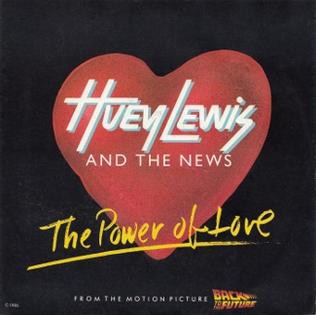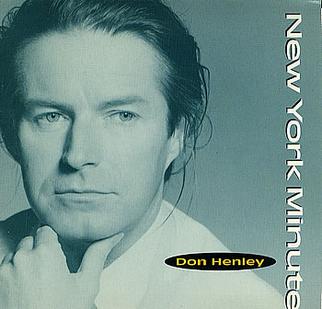 Huey Lewis & the News always had a knack for blending punchy pop hooks with blue-eyed soul, accessible rock riffs, and tongue-in-cheek lyrical charm. But with “Stuck With You,” released in 1986 as the lead single from their fourth album Fore!, the band delivered something deceptively simple yet enduringly heartfelt: a breezy, radio-ready ode to long-term love, packaged with such sincerity and melodic ease that it became one of their most successful and lovable hits. The track, written by Lewis and guitarist Chris Hayes, remains an emblem of the lighter side of 1980s pop-rock and a high point in the band’s career, encapsulating an era where songs about love didn’t need to be tortured or tragic—they could be bright, joyful, and grounded.
Huey Lewis & the News always had a knack for blending punchy pop hooks with blue-eyed soul, accessible rock riffs, and tongue-in-cheek lyrical charm. But with “Stuck With You,” released in 1986 as the lead single from their fourth album Fore!, the band delivered something deceptively simple yet enduringly heartfelt: a breezy, radio-ready ode to long-term love, packaged with such sincerity and melodic ease that it became one of their most successful and lovable hits. The track, written by Lewis and guitarist Chris Hayes, remains an emblem of the lighter side of 1980s pop-rock and a high point in the band’s career, encapsulating an era where songs about love didn’t need to be tortured or tragic—they could be bright, joyful, and grounded.
“Stuck With You” isn’t trying to be ironic. It doesn’t smuggle sadness under its chorus or pretend to be something it’s not. It is, quite literally, a love song about being happy in a relationship—even when things aren’t always perfect. In fact, the title itself seems designed to undercut the romanticism just enough to make it human. “Stuck” might sound negative at first blush, but here it’s recast with warmth and humor. The idea isn’t about being trapped in a bad relationship; it’s about realizing that being with someone—every single day, through the good and the bad—is exactly where you want to be.
Huey Lewis & the News were masters at walking that line between earnest and cheeky. They never took themselves too seriously, which made their sincerity easier to accept. The band first broke big with 1983’s Sports, which spawned hits like “Heart and Soul,” “I Want a New Drug,” and “The Heart of Rock & Roll.” That album went multi-platinum and made them a staple on MTV and Top 40 radio. But Fore! was their commercial peak, and “Stuck With You” helped lead the charge, hitting number one on the Billboard Hot 100 and staying there for three weeks in September of 1986.
Musically, “Stuck With You” is a model of clean production and good-time energy. The song opens with a sharp, syncopated riff and a gently bouncing beat. The rhythm section, anchored by bassist Mario Cipollina and drummer Bill Gibson, is unobtrusive but effective—keeping things tight and grooving. Johnny Colla’s saxophone adds soulful texture without ever overshadowing the melody. Lewis’s vocals are relaxed but full of character, with just enough gravel to make him sound like your cool uncle telling you a love story over a backyard barbecue. Everything about the arrangement is sun-dappled and unforced. It sounds like a vacation.
Lyrically, “Stuck With You” is disarmingly straightforward. The chorus—“Yes, it’s true / I’m happy to be stuck with you”—is instantly memorable and carries the whole emotional payload. It’s not trying to be poetic. It’s not hiding behind metaphor. It’s just plainspoken affection, rendered with a smile and a wink. The verses recount the way others doubted the relationship and how the couple themselves weren’t always sure of each other. But over time, they grew closer, proving everyone—including themselves—wrong. It’s a small story, but one that millions of listeners could identify with.
One of the most charming aspects of the song is its self-awareness. Lewis sings about being doubted and misunderstood, about others expecting the relationship to fail. Yet the tone never turns defensive or bitter. Instead, it’s filled with a kind of humble triumph: We made it work. We chose each other, and we’re still choosing each other. That’s a powerful message, especially in a pop landscape that often focuses on breakups, hookups, or tortured passion. “Stuck With You” celebrates the middle—the comfortable, day-in-day-out reality of love that lasts.
The music video, a staple of mid-’80s MTV rotation, only added to the song’s success and appeal. Shot in the Bahamas, the video features Huey and a love interest stranded together on a deserted island, in between scenic boat rides and playful hijinks. It’s colorful, charming, and plays up the song’s message in a lighthearted way. It doesn’t try to be avant-garde or edgy—it just looks like a fun time. And that fit the mood of the song perfectly. At a time when many music videos were trying to outdo each other in special effects or surrealism, “Stuck With You” offered a refreshing slice of island escapism.
Culturally, the song was a perfect fit for its era. By the mid-1980s, pop music had embraced a kind of upbeat optimism. Reagan-era America, for better or worse, was often reflected in the music of the time: upbeat, affluent, and image-conscious. While there was still room for the rawness of Springsteen or the avant-pop of Talking Heads, there was also a huge audience for music that made you feel good. “Stuck With You” was tailor-made for radio programmers looking for feel-good hits to spin between commercials and weather reports.
Yet despite its mainstream appeal, the song never felt shallow. That’s part of the magic of Huey Lewis & the News—they had a blue-collar authenticity that made even their most polished tracks feel grounded. They weren’t pandering to teenage fantasies or trying to sound cool for critics. They were grown-ups making grown-up music, with humor, perspective, and humility. “Stuck With You” doesn’t try to portray love as perfect—it just says that it’s worth it.
Over the years, “Stuck With You” has remained a fan favorite and a staple of ‘80s nostalgia playlists. It doesn’t get quite as much retrospective love as “Power of Love,” which was tied to the Back to the Future juggernaut, but its legacy is secure. The song has appeared in numerous movies, TV shows, and commercials, and it continues to resonate with listeners who appreciate its blend of sincerity and sunshine.
Huey Lewis himself has always seemed proud of the song. In interviews, he’s talked about how it represents a shift in the band’s songwriting—from the more ironic tone of their early work to a more personal and emotional place. “Stuck With You” isn’t just a hit single—it’s a marker of the band’s evolution. It showed they could make music that was both catchy and meaningful, without losing their sense of fun.
It’s worth noting that “Stuck With You” came at a time when the idea of long-term commitment in pop music was less trendy than ever. The culture of the 1980s often emphasized speed, success, and reinvention. But here was a song that celebrated stability. That dared to say: I’m happy with what I’ve got. I’ve made my choice. And I don’t want out. That’s a radical sentiment, especially in an industry built on novelty and churn.
Of course, the song also functions as a kind of time capsule. Listening to “Stuck With You” now, decades after its release, you can hear the hallmarks of its time: the analog synths, the tight rhythm guitars, the slick mix, the sax solo that drops in just at the right moment. It all screams 1986—but in the best possible way. It’s not dated so much as delightfully period-specific, like a Polaroid snapshot of a smiling couple at a beach resort, wind in their hair, arms around each other, happy to be exactly where they are.
The beauty of “Stuck With You” lies in its modesty. It doesn’t overreach. It doesn’t strain for profundity. It just captures a feeling—one that is surprisingly rare in pop music: contentment. There’s no big drama. No heartbreak. Just two people who’ve weathered some storms, who know each other’s flaws, who might even drive each other crazy sometimes—but who are, ultimately, happy to be stuck together.
And that’s what gives the song its lasting power. Relationships aren’t always grand gestures or passionate implosions. Sometimes, they’re just two people deciding every day to stay. To work through the little annoyances. To laugh at the same jokes. To grow old together. “Stuck With You” celebrates that reality, and it does so with a melody you can hum for days.
Huey Lewis & the News may not have the mystique of more critically revered bands, but their legacy is undeniable. They brought joy, humor, and heart to the pop-rock landscape of the 1980s, and they did it with style. “Stuck With You” is one of their finest achievements—not because it changed the world, but because it captured something true. It reminded us that love doesn’t have to be dramatic to be meaningful. Sometimes, love is just about waking up next to someone and thinking, “Yep. Still here. Still us. And I wouldn’t have it any other way.”


